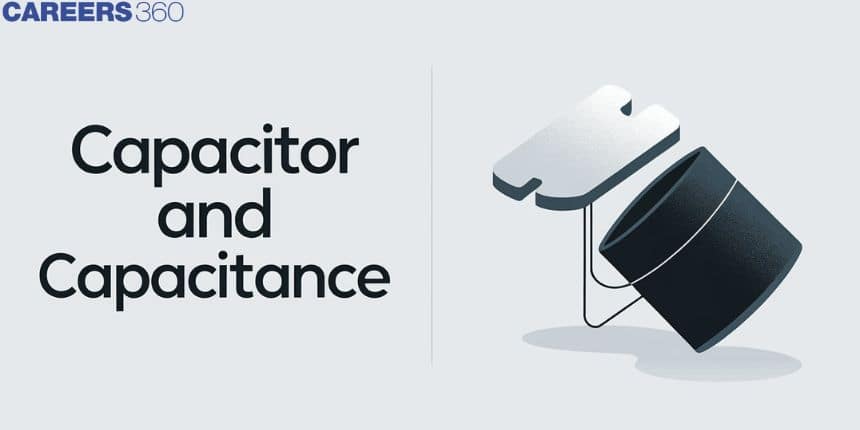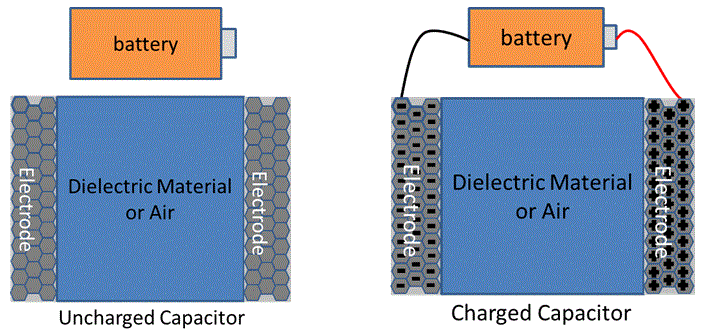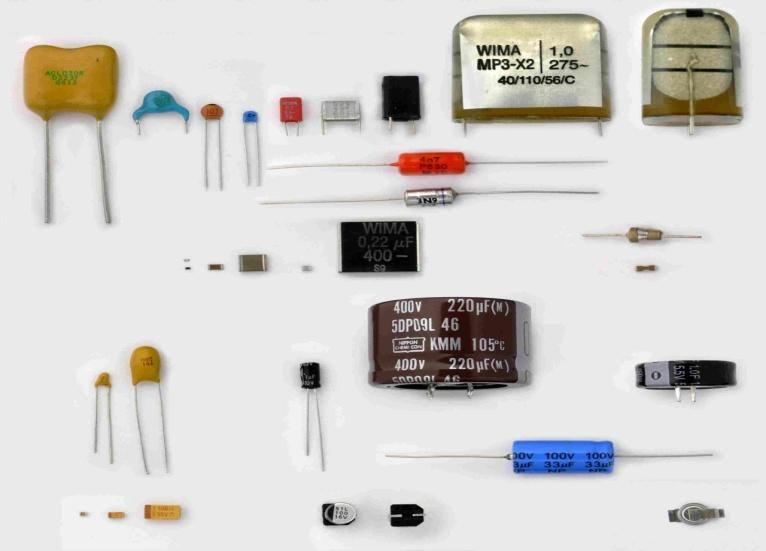Capacitor and Capacitance - Formula, FAQs
This article gives the solution for what is a capacitance of a capacitor, what is a capacitor used for, and on what factors the capacitance of a capacitor depends. The concept of capacitance or capacitor formula, the difference between capacitor and capacitance are also mentioned here. It also explains the relation between q, c, and v.
Note: Capacitor meaning in Tamil is மின்தேக்கி
- Capacitor basics:
- What is the capacitance of a capacitor?
- How does a capacitor work?
- Difference between capacitor and capacitance:

Capacitor basics:
The capacitor was called condensers in the earlier days by Alessandro Volta. As the device stores a higher density of electric charge than the isolated conductor, the condenser term was used. This name is still used in automobile systems and other higher applications now also. Later in 1975, scientist Ewald Georg von Kleist invented the capacitors. But there were no records for his invention. Then, a device called the Leyden Jar was introduced by Dutch scientists and it was named the first capacitor.
Also read -
- NCERT Solutions for Class 11 Physics
- NCERT Solutions for Class 12 Physics
- NCERT Solutions for All Subjects
What do you mean by capacitor?
A device that stores electrical energy is called as a capacitor.
What is the capacitance of a capacitor?
The ability to store electrical energy in the form of charge is called the capacitance of a capacitor. Capacitance is also defined as the ratio of charge Q and the potential across the capacitor V. Capacitance formula is given by,
Capacitance, 
Farad (F) is the SI unit of capacitance.
How does a capacitor work?
A capacitor consists of two conductors separated by an insulator. The insulators used in the capacitor are glass, ceramic, air, etc. They are also called dielectric materials. The capacitor’s capacity to store charge is increased by the insulators. The capacitor is used as high voltage and low voltage appliances depending on the type of dielectric used in the capacitor.

Figure 1 Capacitance of a capacitor with air as dielectric material
The capacitor plates are connected to the negative terminal of the battery. Then the electrons produced by the battery are received by the capacitor plates. The capacitor plates that are connected to the positive terminal of the battery lose electrons to the battery. The capacitor will have the voltage same as the battery when it is charged completely.
Also read :
- NCERT solutions for Class 12 Physics Chapter 2 Electrostatic Potential and Capacitance
- NCERT Exemplar Class 12 Physics Solutions Chapter 2 Electronic Potential and Capacitance
Let C be the capacitance of a capacitor and V be the potential difference. Then, the amount of charge or electrons that move into the plates is given by the formula,
Q=CV
Unit of charge Q: Coulomb C
Unit of capacitance C: Farad F
Unit of potential across the capacitor V: volts
The above formula is called the capacitor formula or capacitance-voltage formula.
Related Topics Link, |
How to calculate the capacitor value in the circuit?
In a series circuit, the charge across each capacitor is equal to the total charge in the series circuit. Therefore, the capacitor value in the series circuit is calculated by the formula,
1/Ctotal=1/C1+1/C2+1/C3
In a parallel circuit, the voltage across each capacitor is equal to the voltage in the parallel circuit. Hence, the capacitor value in a parallel circuit is calculated by,
Ctotal=C1+C2+C3
What is capacitor current?
The rate of change of voltage across the capacitor with time is called the capacitor current.
Capacitor current formula is given by,

Capacitance concentric spheres:
A spherical capacitor is made up of a hollow or a solid spherical conductor with another concentric spherical conductor encircled by it. The capacitance of the concentric sphere is, 
Here, ε0 is the permittivity of free space, and R is the radius of the sphere
Capacitor chart or capacitance table:
The capacitor chart gives the capacitance value with the help of a certain code. The first two digits in the code are represented in picofarad units. The third digit is the multiplier. A code with only two digits has capacitance values only in picofarad or pF.
NCERT Physics Notes :
Give two factors that affect the capacitance of a capacitor
The electrostatic capacitance depends on the following factors:
- Size of the conductor plate
- Insulator or dielectric inserted in between the conductors
Mention the types of capacitors with images.

Figure 2 Different types of capacitors
Types of capacitors are,
- Ceramic capacitors
- Electrolytic capacitors
- Non-polarized capacitors
- Film capacitors
Difference between capacitor and capacitance:
There is not much difference between a capacitor and a capacitance.
- A capacitor stores the electrical charge whereas capacitance is the capacity of the device to store the charges.
- Capacitance is observed in between two conductors while a capacitor is a device constructed to increase the charge storing ability.
What is a capacitor used for?
The capacitor is widely used in the field of electronics. Capacitors with varying current capabilities, temperature coefficients, and stability levels are used in different applications.
Also check-
Frequently Asked Questions (FAQs)
The capacity of the capacitor is the capacitance of the device to store the charge.
From the capacitance formula, we can say that capacitance is inversely proportional to the voltage across the capacitor.
The basic function of the capacitor is to store energy in the form of an electric charge.
Supercapacitors use an anode from an electrolytic capacitor as a dielectric which has higher dielectric strength.
1/2
The ability of a capacitor to store charge depends on the dielectric constant of the material.
The capacitance of a capacitor is not affected by the type of material of the conductor plate.
Increasing the charge on the plates of a capacitor means the voltage across the plates is increased.
In general, a capacitor that is charged for up to 20 seconds can hold the charge for about 40 minutes.
Zero
Also Read
29 Nov'24 01:09 AM
14 Nov'24 06:11 PM
25 Sep'24 06:30 PM
25 Sep'24 01:34 PM
25 Sep'24 12:59 PM
25 Sep'24 12:06 PM
24 Sep'24 06:12 PM
24 Sep'24 04:45 PM
24 Sep'24 11:32 AM
13 Aug'24 11:07 AM

